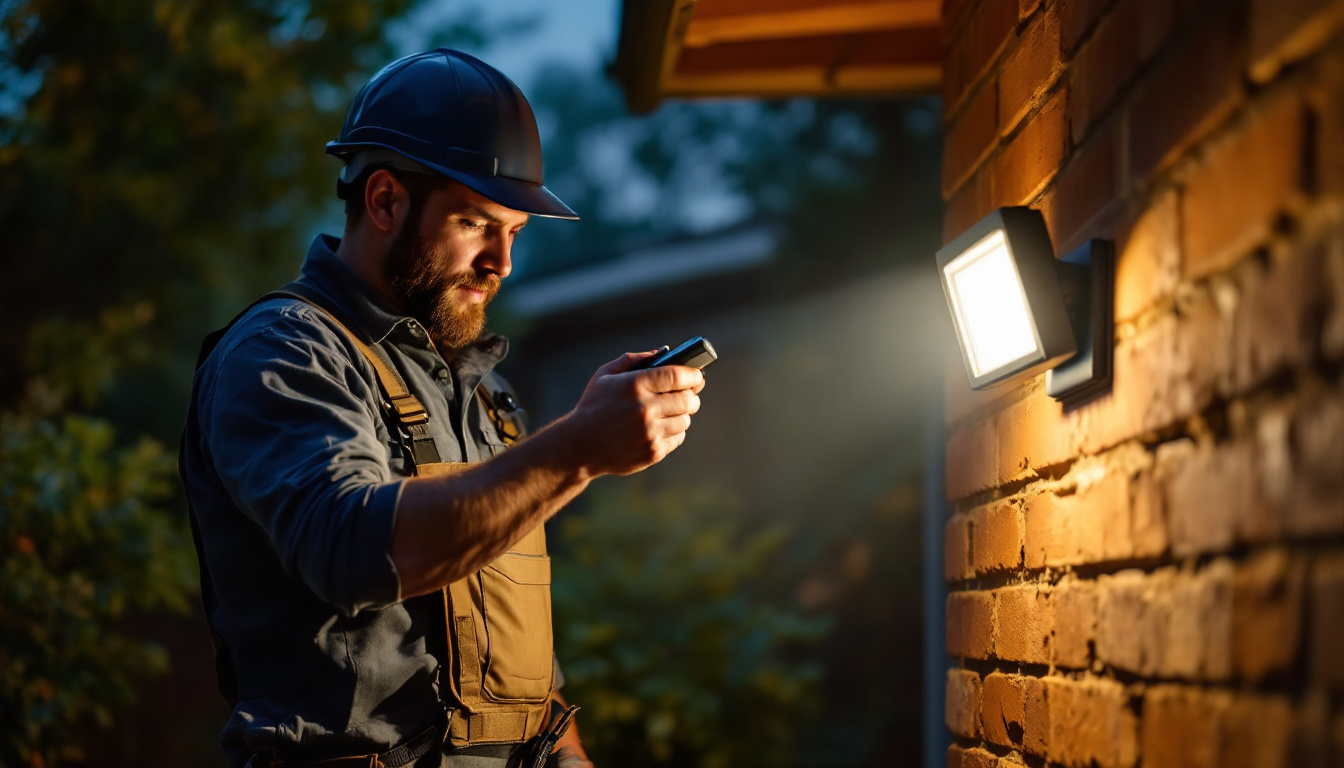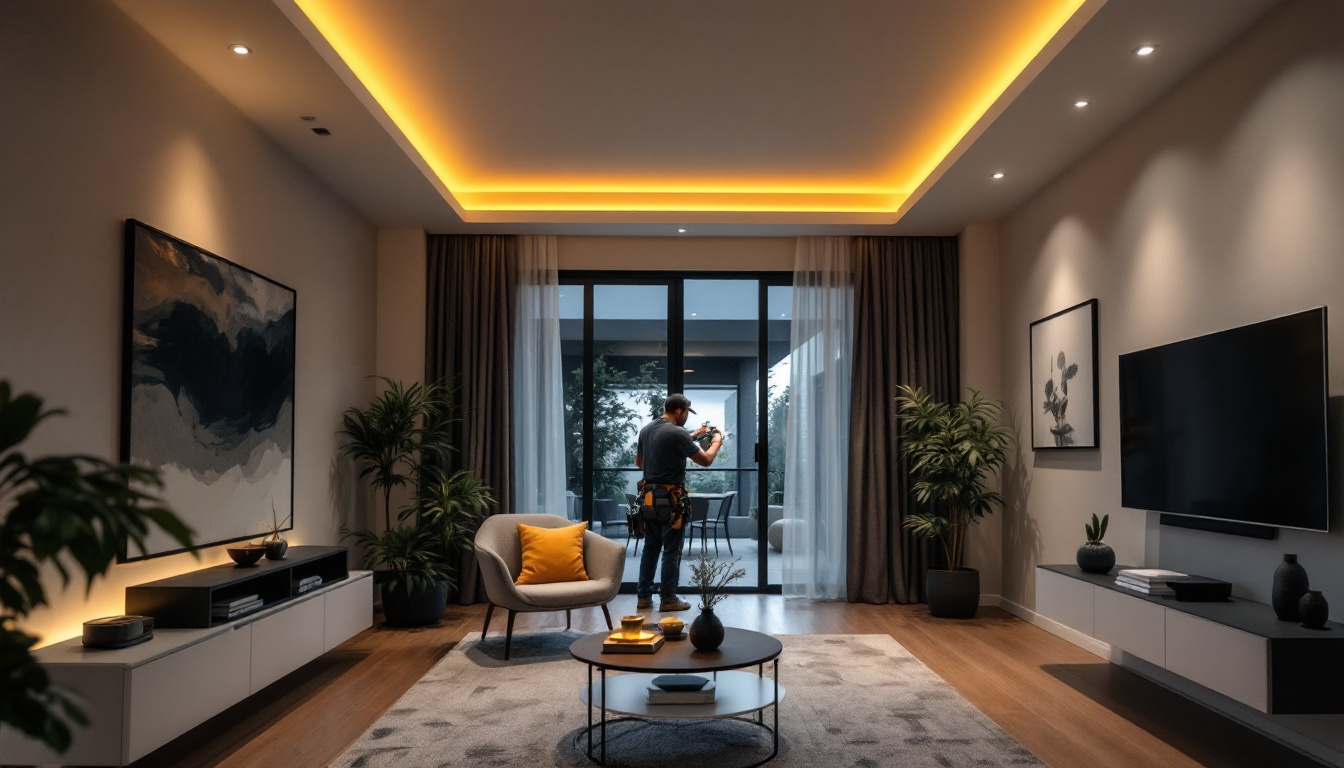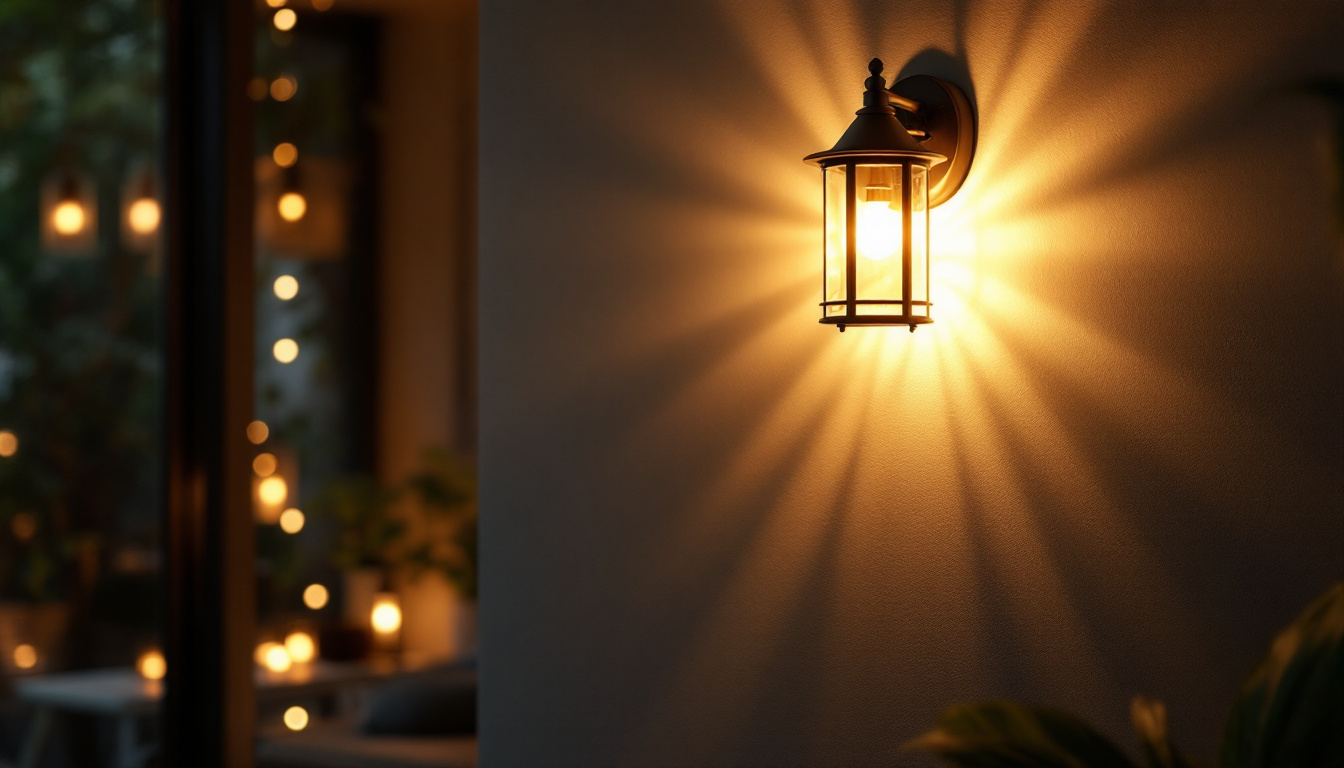
Lighting contractors play a pivotal role in enhancing the safety and aesthetics of residential and commercial spaces. Among the many tools at their disposal, sensor flood lights have emerged as a popular choice for both security and illumination. This article delves into the intricacies of sensor flood lights, providing valuable insights and resources that lighting contractors can leverage to master this essential component of modern lighting design.
Sensor flood lights are specialized lighting fixtures equipped with motion sensors that automatically activate the light when movement is detected. This feature not only enhances security by illuminating dark areas but also conserves energy by ensuring that lights are only on when needed. The technology behind these lights has evolved significantly, leading to improved efficiency and functionality. With advancements in LED technology, many sensor flood lights now offer longer lifespans and lower energy consumption compared to traditional incandescent bulbs, making them an eco-friendly choice for both residential and commercial properties.
There are several types of sensor flood lights available on the market, each designed to meet different needs and preferences. The most common types include:
When selecting sensor flood lights, several key features should be taken into account:
Additionally, many modern sensor flood lights come equipped with features such as adjustable timers, allowing users to set how long the light remains on after activation. This can be particularly beneficial for energy conservation, as it prevents lights from staying on longer than necessary. Some models also offer smart technology integration, enabling users to control the lights remotely via smartphone apps. This feature not only enhances convenience but also allows for real-time monitoring of security situations, providing peace of mind to homeowners and business operators alike.
Another important consideration is the weather resistance of sensor flood lights. Given that these fixtures are often installed outdoors, it’s essential to choose models that are rated for various weather conditions. Look for lights with an IP (Ingress Protection) rating, which indicates their resistance to dust and moisture. A higher IP rating ensures that the lights will function effectively in rain, snow, or extreme temperatures, thus extending their lifespan and reliability. By taking these factors into account, you can select sensor flood lights that not only meet your lighting needs but also enhance the safety and security of your property.
Proper installation of sensor flood lights is critical to ensure optimal performance and longevity. Following best practices can help contractors achieve the best results.
Choosing the right location for sensor flood lights is essential. Ideally, lights should be installed in areas that require enhanced visibility, such as driveways, entrances, and backyards. It is also important to consider the sensor’s field of view; placing the light at a height that maximizes detection while minimizing obstructions is key. Additionally, avoiding areas with excessive movement, such as near trees or shrubs, can prevent false triggers caused by wildlife or wind. A well-planned layout not only enhances security but also provides peace of mind for homeowners, knowing that their property is well-lit and monitored.
Ensuring a reliable power supply is vital for the functionality of sensor flood lights. Contractors should adhere to local electrical codes and regulations when wiring these fixtures. Using weatherproof connections and conduits can help protect against the elements, prolonging the life of the installation. Furthermore, considering the integration of energy-efficient LED lights can significantly reduce electricity costs while offering brighter illumination. It’s also beneficial to plan for future upgrades or expansions by installing additional circuits or outlets, allowing for easy integration of more lighting solutions as needed.
Once installed, testing and calibrating the sensor flood lights is crucial. This involves adjusting the sensitivity and duration settings to suit the environment. It’s advisable to conduct tests during different times of day to ensure the lights perform as expected under varying conditions. Moreover, keeping a log of the adjustments made during testing can help in fine-tuning the settings over time. Regular maintenance checks, including cleaning the sensors and checking for obstructions, will ensure that the flood lights continue to operate efficiently, providing reliable security for years to come.
Like any electrical fixture, sensor flood lights require regular maintenance to ensure they function effectively over time. Understanding common issues and their solutions can save contractors time and effort.
Dust, debris, and moisture can accumulate on sensor flood lights, affecting their performance. Regularly cleaning the lenses and sensors helps maintain optimal functionality. Using a soft cloth and a mild cleaning solution is recommended to avoid scratching the surfaces.
Contractors should be aware of common issues that can arise with sensor flood lights, such as:
The landscape of sensor flood lights is continually evolving, with advancements in technology leading to more efficient and user-friendly options. Staying informed about these developments is crucial for lighting contractors.
Many modern sensor flood lights now come equipped with smart technology, allowing for remote control and monitoring through mobile applications. This feature provides contractors with the ability to manage lighting systems more efficiently and respond to issues in real-time.
With a growing emphasis on sustainability, energy-efficient sensor flood lights are becoming increasingly popular. LED options not only consume less energy but also have a longer lifespan compared to traditional bulbs. Contractors should consider recommending these options to clients looking to reduce their carbon footprint.
To master the art of working with sensor flood lights, contractors can benefit from various resources that provide insights, tips, and best practices.
Joining industry associations can provide contractors with access to valuable resources, including training programs, certifications, and networking opportunities. Organizations such as the National Electrical Contractors Association (NECA) and the Illuminating Engineering Society (IES) offer a wealth of information on lighting technologies and trends.
Many manufacturers and industry experts offer online training sessions and webinars focused on sensor flood lights. These sessions can cover installation techniques, troubleshooting, and the latest advancements in technology. Participating in these programs can enhance a contractor’s knowledge and skills.
Attending trade shows and expos dedicated to lighting and electrical contracting provides contractors with firsthand experience of new products and technologies. These events often feature demonstrations, workshops, and opportunities to connect with manufacturers and other professionals in the field.
Learning from real-world applications can provide valuable insights for lighting contractors looking to implement sensor flood lights effectively. Case studies and success stories illustrate how these lights have been utilized in various settings.
In residential settings, sensor flood lights have been successfully used to enhance security and provide convenience. Homeowners have reported increased peace of mind with lights that activate upon detecting movement, deterring potential intruders and illuminating pathways for safe navigation at night.
In commercial environments, sensor flood lights have proven effective in reducing energy costs while improving safety. For instance, businesses that installed these lights in parking lots have experienced a significant decrease in energy consumption, as the lights only activate when needed, thus optimizing operational costs.
Mastering sensor flood lights is essential for lighting contractors aiming to provide high-quality services to their clients. By understanding the technology, adhering to best practices for installation and maintenance, and staying informed about industry advancements, contractors can enhance their expertise and deliver exceptional results. Utilizing available resources, learning from case studies, and embracing innovative solutions will ensure success in this ever-evolving field.
Ready to elevate your lighting projects with the finest sensor flood lights on the market? Look no further than LumenWholesale, where we offer an exceptional range of spec-grade lighting products at unbeatable wholesale prices. Say goodbye to local distributor markups and hello to high-performance lighting that meets the highest industry standards. With LumenWholesale, bulk buying is a breeze, and with free shipping, you’re guaranteed the best value without any hidden fees. Don’t compromise on quality, affordability, or convenience. Visit LumenWholesale today and experience the difference for yourself!

Discover how incorporating flush mount can lights into your projects can elevate your lighting business.

Explore how lighting discounts can significantly enhance energy efficiency in homes and businesses.

Discover expert insights on overcoming common challenges faced by lighting contractors when installing indoor wall lanterns.

Discover practical solutions for lighting contractors facing challenges with washer dryer outlet adapters.